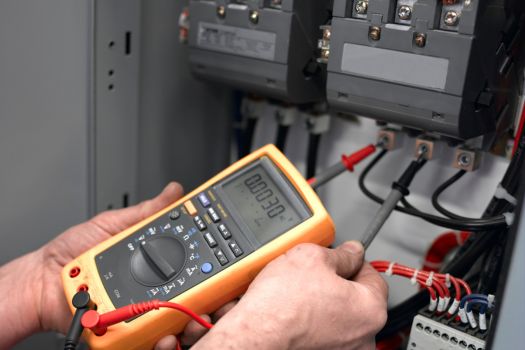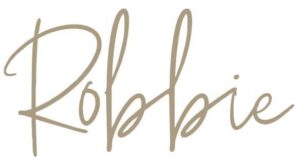You’ve found a home that feels like the one. The layout checks your boxes. The neighborhood looks peaceful. Everything feels just right—until it isn’t. The truth is, even the most charming homes can conceal serious dangers behind the walls, under the floors, or floating invisibly in the air. Are there health or safety hazards in the house? That question should never go unasked, and certainly never unanswered.
I’m Robbie English, Broker and REALTOR at Uncommon Realty, I’ve seen what happens when buyers rush forward without pausing to consider what lies beneath the surface. That’s why I stress the importance of buyer safety inspections at every stage of the journey. These go well beyond the routine and into what truly protects your future. With decades of experience and a mission to empower you with every competitive edge, I’ll help you dig deeper—so you don’t pay for it later.
Let’s talk about what health and safety really mean when it comes to your next home.

TL;DR — Are There Health or Safety Hazards in the House? Quick Takeaways
- Yes, there may be health or safety hazards in the house you’re buying—don’t ignore them.
- A standard home inspection isn’t enough—buyer safety inspections reveal hidden issues.
- Mold, lead, asbestos, radon, and water contaminants can pose serious risks if left unchecked.
- Robbie English and his team provide expert guidance backed by decades of experience.
- Strategic inspections mean smarter decisions, stronger negotiating power, and peace of mind.
What Buyer Safety Inspections Really Cover
Many buyers feel reassured once the general home inspection is complete. Don’t get me wrong—it’s an important piece of the puzzle. But that’s all it is: a piece. Buyer safety inspections step in to expose threats that aren’t visible to the untrained eye.
These specialized assessments are designed to identify conditions that could compromise your health, safety, and long-term financial well-being. Things like elevated radon levels, mold infestations, or contaminated drinking water aren’t always apparent during a quick walkthrough. But their effects can last a lifetime.
When you work with me, I’ll help you determine exactly what types of testing make sense for the property you’re considering. I don’t rely on guesswork—I rely on strategic foresight built from years of practical, hands-on experience in both representing buyers and teaching other agents nationwide how to do it right.
Are There Health or Safety Hazards in the House You’re Buying?
You’d be surprised how often the answer is yes.
Sometimes, a beautiful renovation masks issues that were simply painted over instead of resolved. Other times, properties built decades ago quietly hold onto outdated (and now dangerous) materials. The only way to know is to test—and the right tests depend on the home’s age, location, and condition.
If the home was built before 1978, you’ll want to check for lead-based paint. If the attic has older insulation or ductwork, it could be harboring asbestos. That charming basement? It might be the perfect breeding ground for toxic mold.
Don’t assume the seller knows about—or will disclose—these problems. Many don’t. That’s why you have me in your corner. Together, we’ll go beyond appearances and uncover what you’re really buying.
Why Relying on Standard Inspections Isn’t Enough
Let me be clear: a traditional home inspection is vital. It can reveal things like faulty wiring, outdated plumbing, or roofing issues that need repair. But it rarely digs into the health-impacting elements that can quietly wreak havoc after closing.
That’s where buyer safety inspections earn their keep. These include, but aren’t limited to:
- Mold assessments that test for airborne spores and hidden growth.
- Radon testing to detect this invisible, cancer-causing gas.
- Asbestos identification in older tile, insulation, and siding.
- Lead-based paint testing for homes built before regulations changed.
- Water quality testing for well systems or older municipal piping.
Each of these inspections is tailored to identify the kinds of risks that could hurt not just your wallet, but your health. And each one empowers you with the ability to act—either to negotiate repairs, adjust your offer, or walk away from a ticking time bomb.
The Advantage of Experience You Can Trust
When it comes to asking are there health or safety hazards in the house, the person guiding you matters. You don’t want someone who just checks boxes. You want someone who anticipates what others miss.
I’m Robbie English, and real estate is more than my profession—it’s a skillset I’ve spent decades sharpening for your benefit. I’ve brokered complex deals, navigated hidden hazards, and coached countless real estate agents across the country on how to serve their clients with integrity and insight.
My team at Uncommon Realty operates under the principle that knowledge is power. We stay informed, vigilant, and proactive—because that’s what it takes to protect your best interests in a transaction of this magnitude.
Mold, Radon, Asbestos, and More—Know What You’re Up Against
If you’re wondering whether buyer safety inspections are worth the cost, ask yourself this: Would you rather spend a few hundred dollars now, or several thousand later while compromising your health?
Here’s the reality. Mold doesn’t always smell. Radon doesn’t set off alarms. Asbestos can sit quietly behind walls, harmless—until you disturb it during a renovation.
Even something as simple as local well water can contain heavy metals or bacteria that go unnoticed until someone falls ill. These aren’t rare cases—they’re common oversights. And they’re precisely why the inspections I recommend go deeper than the standard checklist.
Putting Inspections to Work for You
Information is your greatest advantage in any negotiation. When you uncover an issue—be it mold, lead, or radon—you gain leverage. You can ask the seller to remediate the hazard before closing, reduce the purchase price to cover cleanup costs, or choose to walk away entirely.
I help my clients interpret the results of buyer safety inspections in real-world terms. Not just what the reports say—but what they mean for your daily life, your budget, and your long-term investment. This is where my experience becomes your edge.
Remember, inspectors deliver data. I help you turn that data into action. That’s what a seasoned real estate advisor should do.
Why You Need More Than a Real Estate Agent
I’m not just here to unlock doors and draft offers. I’m here to protect you from avoidable mistakes—and position you for smart, secure decisions.
As a national real estate speaker and real estate instructor, I teach agents how to elevate their service. But when you work with me, you’re getting the source. You’re getting someone who’s already mastered what others are just beginning to understand.
So when you ask, are there health or safety hazards in the house, I’m already five steps ahead, helping you find out—and showing you what to do about it.
What Happens If You Skip Safety Inspections?
You might not feel the consequences immediately. But over time, the impact can be devastating.
A small mold issue can turn into chronic respiratory problems. Undetected radon can slowly affect lung health. Lead paint chips—especially around windows and doors—pose neurological risks, particularly for children.
Even if you don’t see the effects today, you might face them tomorrow. And by then, legal liability, repair costs, or even health consequences might be out of your control.
That’s why we get ahead of it. That’s why I never let my clients close on a home without a clear-eyed understanding of what’s really inside.
Trust Robbie English and His Team to Guide You
When you choose to work with me, you’re not just hiring a REALTOR—you’re aligning yourself with someone who has strategically worked to master every angle of this business for your protection and benefit.
I’ve spent decades refining my process, anticipating roadblocks, and creating smoother, smarter paths for buyers like you. I don’t do guesswork. I deliver clarity.
And when it comes to answering the question are there health or safety hazards in the house, I’ll make sure you have more than just an answer—you’ll have a plan.
Final Thoughts: Make Health and Safety a Priority
Your home should be a place of comfort—not a source of unseen danger. And yet, time and time again, buyers make decisions without all the facts. That won’t happen on my watch.
Buyer safety inspections aren’t just another box to check—they’re a fundamental part of how I protect your future. And by working with someone who’s trained others in the art and science of real estate, you put yourself in a position to win.
I don’t just want you to love your home. I want you to live in it safely, confidently, and with full knowledge of what you’re walking into. And that starts with a simple question: Are there health or safety hazards in the house?
Let’s find out together—and make sure the answer doesn’t stop you from building the future you deserve with Uncommon Realty.





 Just checking. Are you sure there are not any questions or if there’s anything more my team or I can help with, we’re here for you.
Just checking. Are you sure there are not any questions or if there’s anything more my team or I can help with, we’re here for you.
